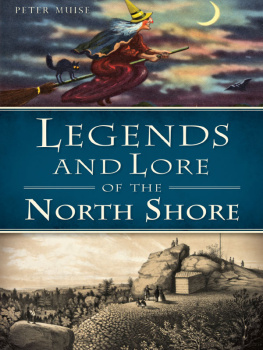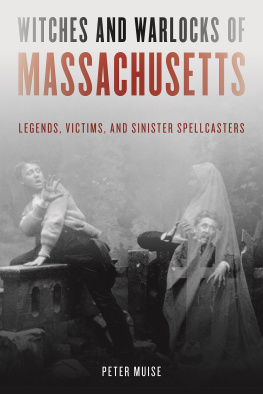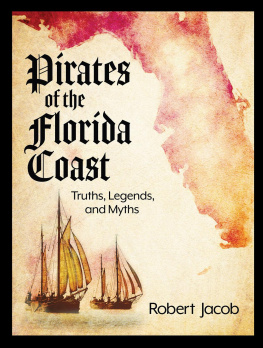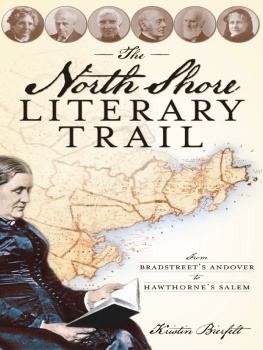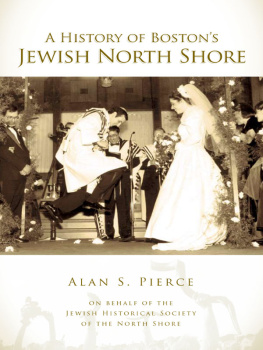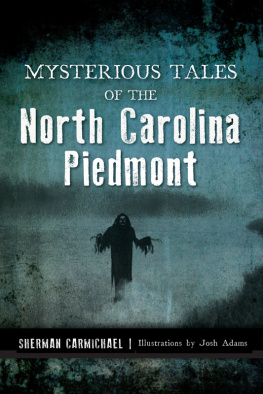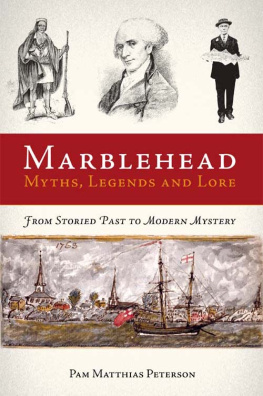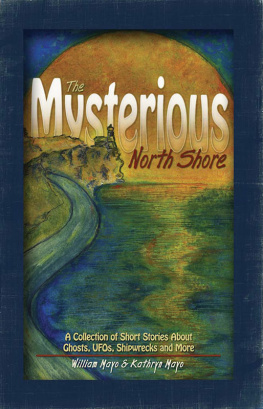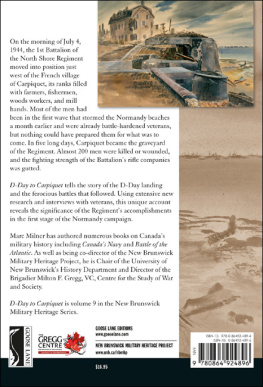

Published by The History Press
Charleston, SC 29403
www.historypress.net
Copyright 2014 by Peter Muise
All rights reserved
First published 2014
e-book edition 2014
ISBN 978.1.62585.048.5
Library of Congress Cataloging-in-Publication Data
Muise, Peter.
Legends and lore of the North Shore / Peter Muise.
pages cm
Includes bibliographical references.
print edition ISBN 978-1-62619-517-2 (paperback)
1. Folklore--Massachusetts--North Shore (Coast) 2. Legends--Massachusetts--North Shore (Coast) 3. Tales--Massachusetts--North Shore (Coast) 4. North Shore (Mass. : Coast)--Social life and customs--Anecdotes. 5. North Shore (Mass. : Coast)--Biography--Anecdotes. I. Title.
GR110.M4M85 2014
398.2097445--dc23
2014019124
Notice: The information in this book is true and complete to the best of our knowledge. It is offered without guarantee on the part of the author or The History Press. The author and The History Press disclaim all liability in connection with the use of this book.
All rights reserved. No part of this book may be reproduced or transmitted in any form whatsoever without prior written permission from the publisher except in the case of brief quotations embodied in critical articles and reviews.
CONTENTS
ACKNOWLEDGEMENTS
Special thanks to Lori Gilbert for choosing castles and cemeteries over the beach; to Onix Marrero for the occult symbols diagram; and to Stephen Shutt, David Goudsward and Donovan Louks for their help with the Lovecraft material. Thanks, of course, to my parents and brother for having strange reading material available when I was a kid, and especially to Tony Grima for keeping me grounded and being willing to go on some unusual daytrips.
INTRODUCTION
There are lots of reasons to visit the towns and cities that stretch along the coast from Boston to New Hampshire. Quaint towns, interesting historic sites and sandy beaches draw tourists from around the world.
The North Shore is a beautiful part of Massachusetts, and many people are also proud to call it home. On any given day, parents are driving their kids to birthday parties, commuters are traveling to their jobs, high school teams are practicing for the next big game and retirees are hanging around Dunkin Donuts.
In many ways, its like any other part of America: orderly, safe, industrialized and rational. But just like every one of us, the North Shore has its irrational sidethe side thats a little bit unusual, occasionally quirky and sometimes even scary.
This book is about that side of the North Shore: the witches who gathered at night, the pirates who buried their treasure on the beach, the abandoned and haunted places hidden in the woods and the bizarre humans and other creatures who have lived here. So take a step away from the rational world, at least for a while, and get acquainted with the strange and unusual heritage of the North Shore.
Chapter 1
NATIVE AMERICAN LORE AND MAGIC
The cities and towns that make up the North Shore are some of the oldest in the United States. Roger Conant founded Salem in 1626, only six years after the Pilgrims landed down on Cape Cod, and most other towns in the area were settled long before anyone even dreamt of the American Revolution. By American standards, the North Shore is almost ancient.
But its important to remember that people lived here for thousands of years before the first Europeans ever set foot on the North Shores beaches. Archaeologists believe the first humans came into Massachusetts more than ten thousand years ago. They were hunters and gatherers, and they followed mammoths, hairy bison and other game into the region as the animals grazed their way across the newly fertile landscape revealed by the retreat of the last ice ages glaciers.
Ten thousand years ago is ancient history by any standard. Although archaeologists have found tools and other artifacts from the ancient people who lived on the North Shore, very little is known about what they thought or how they lived.
For example, in the 1970s, several ancient Indian burials were discovered at Morrills Point in Salisbury, Massachusetts. Some of the skeletons, many of which had been carefully buried in the fetal position, were more than five thousand years old. Intriguingly, the bodies had been ritually covered in red ochre, a pigment found in soil. The use of this pigment in burial rites indicates the deceased were part of the Red Paint culture, which existed along the New England, Canadian Maritime and Arctic coasts for thousands of years. Although archaeologists understand that the Red Paint people lived by fishing and hunting, they did not use writing, so we dont know anything about how they viewed the world. Their myths, legends and lore have been lost to us. The same holds true for the other ancient peoples who inhabited the area.
However, we do know a lot more about their descendants, the American Indians who inhabited the North Shore when the English explorers and settlers arrived. The tribes that inhabited the North Shore were known as the Pennacook, which means roughly at the bottom of the hill. They are also sometimes referred to as the Pawtucket, which means at the falls in the river.
For centuries, thousands of Pennacook lived in the area before they were killed by European diseases, for which they had no defense, and defeated in wars by the better-armed English. Their settlements were clustered near the ocean and rivers, which were convenient for both fishing and travel by canoe. The weather by the water was also conducive to growing crops like corn, squash and beans. An early Puritan settler in Salem, which was called Naumkeag by the Pennacook, noted the many plains where there is much ground cleared by Indians for their extensive gardens.
The Pennacook were divided into smaller tribes, each ruled over by a sachem, or chief. Sachems were usually men and passed their positions to their sons when they were no longer able to rule. Their rule was not autocratic and absolute but was instead based on how persuasive they were. Any of their subjects was free to give fealty to another sachem at any time.
While the sachems were the political leaders, the Pennacook sought spiritual and religious guidance from men called powwows. Although powwow is now used to mean a Native American gathering or celebration, it originally referred to someone who attained magical or spiritual power. It may be related to the word taupowaw, which meant one who spoke wisely. Powwows were shamans and worked with spirits to help the members of their tribes.
MANITOUS AND SPIRITS
Like the other Indian groups in New England, the Pennacook believed everything in the world was infused with spiritual energy, which they called manitou. Trees, animals, rocks, rivers and people all possessed some degree of manitou. Some things contained a lot of it, such as large mountains or ancient trees. Unusual animals were also highly charged with manitou. Roger Williams, the founder of Rhode Island, wrote in 1643:
The Indians say they have black foxes, which they have often seene, but never could take any of them. They say they are Manittooes, that is Gods, Spirits, or Divine powers, as they say of everything which they cannot comprehend.
Some people also possessed a lot of manitou. Williams noted, Thus if they see one man excel others in Wisdom, Valour, Strength, Activity, etc. they cry out Manittoo.
Next page
